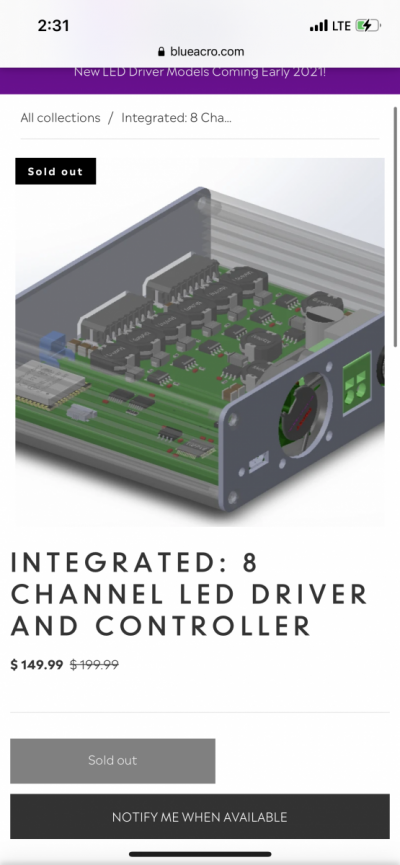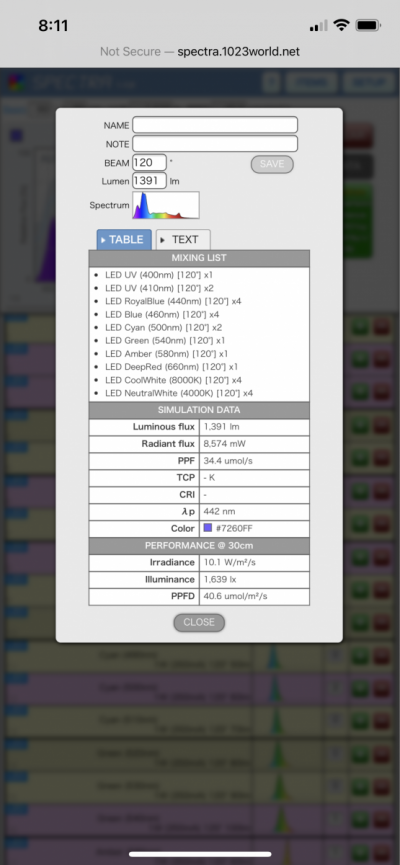This is a good looking chart right here. I like this. I’m thinking about the middle having no lens as they are just there for color blending. Others with 90 degree to 120 degrees.Starting point, increase RB by 2 for symmetry.
No guarantees on PAR atm..

Navigation
Install the app
How to install the app on iOS
Follow along with the video below to see how to install our site as a web app on your home screen.
Note: This feature may not be available in some browsers.
More options
You are using an out of date browser. It may not display this or other websites correctly.
You should upgrade or use an alternative browser.
You should upgrade or use an alternative browser.
Leds Combination
- Thread starter baseballfanatic2
- Start date
- Tagged users None
- Joined
- Sep 18, 2017
- Messages
- 5,589
- Reaction score
- 3,439
CREE is sort of king of efficiency.. Color and sometimes color fidelity over the diode (uniform color across the diode) suffers.Again, thanks for all your help and support here. Why do you consider luxeon over Cree? Isn’t Cree the A+ leds?
CRI (color fidelity) is inversely proportional to efficiency for the most part.
Really mostly applies to CREE whites and generally poor CRI or yellowish/green tinting.
They have some great whites though but try to buy them..
As far as solid colors.. flip a coin.
All sorts of brands can claim superiority over others i.e viosys over Semi ect by some metric.
Luxeon has a more easily available and wider "pallet" to me.
Luxeon also provides tools to do some number crunching..
Why?Consider using Luxeon whites instead of the CREES.
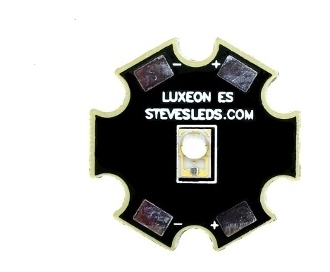
Luxeon ES 6,500K COOL WHITE 3 Watt LEDs-8794102425
www.stevesleds.com
From your 'Steves LEDs' link:
To me that's utter nonsense. FV a hallmark of efficiency??? 'Consuming' 2.60 V??? AFAIK it's all about lm/W.Description
These are ultra efficient LEDs from Luxeon. This is the Luxeon ES series! The finest Cool White LED on the market - Superior to Cree LEDS (XM-L). XM-L consumes 2.90V at 700ma, Luxeons only consume 2.60!!.
We purchase in very large quantities to give you best price on the market!
And where do these 2.60 V @ 700 mA come from? The LUXEON Rebel ES Datasheet says
Luxeon Rebel ES 5650K CoolWhite @ 25°C
235 lm @ 3.00 V @ 700 mA resp. 2.1 W thus 112 lm/W
OTOH, according to the Cree XLamp XM-L3 Datasheet you get for Cree XM-L3 5700/6200/6500K LEDs
with a FV of 2.75 V @ 700 mA resp. 1.925 W (unfortunately only listed for unfavourable 85°C)
U4-Binning: 369 lm @ 25°C / 340 lm @ 85°C thus 192 lm/W (25°C) / 177 lm/W (85°C)
U3-Binning: 347 lm @ 25°C / 320 lm @ 85°C thus 180 lm/W (25°C) / 166 lm/W (85°C)
That's why I use Crees. Or where am I wrong?
- Joined
- Sep 18, 2017
- Messages
- 5,589
- Reaction score
- 3,439
Nobody's wrong really.. "Personally" as to whites CREE has worse toning and inconsistent color fidelity across the diode,
Posted March 7, 2014
Cree for output (and XP-E2 465nm Blues), Luxeon for their M series and color rendering (high CRI whites and powerful cyans/deep reds), Bridgelux for their easy to use BBDs (big, beautiful diodes), and LEDgroupbuy for their focus on reef specific innovation and bringing DIY to the hobbyist level. I think I covered just about everything.
at least historically.
It can be a minor point in multi-color arrays.
It really gets more complicated if one goes beyond power ..
Besides it is why "I" prefer them.. YMMV.
As a DIY "we" have the luxury of mixing/matching brands a bit moreso than a manuf that wants to shrink their supply chain if possible.
Besides try to find decent 6500k CREE's on star boards..
Anything past 5000K is either hard to find, low cri, or most likely not from the best bins or outright counterfeit.
You're right, even the latest XM-L3 LEDs emit light of lower color temperature with increasing beam angles, which however I only notice while looking directly at the LED. In case such a discoloration becomes evident in the tank, it could easily be compensated when the setup provides an independent blue channel. That's why I go for Cree's significant reduction in energy consumption.Nobody's wrong really.. "Personally" as to whites CREE has worse toning and inconsistent color fidelity across the diode,
at least historically.
It can be a minor point in multi-color arrays.
It really gets more complicated if one goes beyond power ..
Besides it is why "I" prefer them.. YMMV.
As a DIY "we" have the luxury of mixing/matching brands a bit moreso than a manuf that wants to shrink their supply chain if possible.
Besides try to find decent 6500k CREE's on star boards..
Anything past 5000K is either hard to find, low cri, or most likely not from the best bins or outright counterfeit.
And I don't think CRI of a single LED type is of major importance with numerous different monochrome light sources contributing to the final optical result. Remember, that even lighting fixtures without any phosphor coated LED may offer an aesthetically pleasing visual experience.
But as you said, YMMV.
- Joined
- Sep 18, 2017
- Messages
- 5,589
- Reaction score
- 3,439

No white light
Hi all I was just wondering if anyone runs their lights with no white, just blues, uv, red and green?
 www.reef2reef.com
www.reef2reef.com
This two Pictures are taken 10 minutes ago. No White LEds. No photoshoping. it looks like this!
- Joined
- Sep 18, 2017
- Messages
- 5,589
- Reaction score
- 3,439
Sorry, no such animal but lime (luxeon) and/or green (since inefficient, pick brand) isn't "as PAR-ish" as other wavelengths.@oreo5457 do you know of top quality leds that would add light but not par?
And greenish is "eye bright"
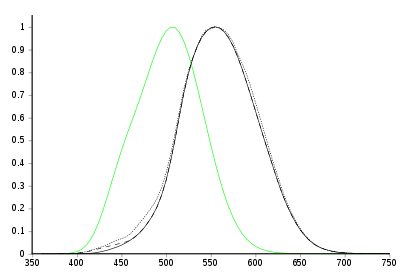
Green is like human low light sensitivity (brightness)A luminous efficiency function or luminosity function describes the average spectral sensitivity of human visual perception of brightness. It is based on subjective judgements of which of a pair of different-colored lights is brighter, to describe relative sensitivity to light of different wavelengths. It should not be considered perfectly accurate, but it is a good representation of visual sensitivity of the human eye and it is valuable as a baseline for experimental purposes. Different luminosity functions apply under different lighting conditions, varying from photopic in brightly lit conditions through mesotopic to scotopic under low lighting conditions. Without qualification, the luminosity function generally refers to the photopic luminosity function.
Black is like daylight sensitivity.
Cyan is "eye brite the best at low light conditions.
Guess compared to sunlight most tanks are errr low light,
I’m back. Here’s what I got now after some tweaking..FIRST. I don't do reefs.. FW design is more my thing and a Loooong story as to why I even post here but over the years things get fairly obvious from both the science and common usage..
Wide blue band
Low red (under 20% ) of total par
UV is "arguable" but as to leds problem is cost and longetivity.
IR is the new kid (740-ish)
Looks matter to some
# of photons /unit area is important.
Soo that said my "theoretical" design covering above criteria and not minimizing # of color choices.
And some qualifiers:
Choose 400 and 410 to sort of average a 405nm LED so technically I'd have picked that.
I don't use green. Inefficient diodes and frankly seems sort of iffy when one can substituent cyan for similar use.
Also lot of green in any white led.
Cyan appears to be somewhat more "active" and cyan is one of the more dominant colors at depth in seawater.
Cyan/amber/whites are more for "viewers color" though (RGB=W)
Chart is normalized to 3W diodes thus you will see large numbers (orig listing is 1W)
different brands of diodes have different outputs so gets err messy in estimates.
No consideration of personal tastes AND again theoretical based on best guess.

So one way I'd build it IF I wanted to.
Has less RB than most would consider but some in the whites to compensate.
Can't really adj. to "daylight" and CRi is horrible
A "20000K class" look.
For comparison (sorry "old" classification":

you prefer a more natural 14000-10000k looks things change.
fun tool:

SPECTRA
SPECTRA can perform the optical simulation of many required for coral breeding. SPECTRAはサンゴ飼育に必要な多くの光学シミュレーションを行う事が可能です。spectra.1023world.net
6 blue
4 royal blue
4 cool white
2 warm white
2 cyan
1 deep red
1 lime
1 uv
1 violet
massed green & amber to make up the 566nm led as there wasn’t one.
What are your thoughts?
* MIXING LIST
----------------------------------------
LED UV (400nm) [120°] x1
LED UV (410nm) [120°] x1
LED RoyalBlue (440nm) [120°] x4
LED Blue (460nm) [120°] x6
LED Cyan (500nm) [120°] x2
LED Green (540nm) [120°] x1
LED Amber (580nm) [120°] x1
LED DeepRed (660nm) [120°] x1
LED CoolWhite (8000K) [120°] x4
LED WarmWhite (3000K) [120°] x2
----------------------------------------
* SIMULATION DATA
----------------------------------------
Luminous flux : 1,138 lm
Radiant flux : 7,905 mW
PPF : 31.5 umol/s
TCP : ‑ K
CRI : ‑
λp : 457 nm
Color : #6051FF
----------------------------------------
* PERFORMANCE @ 30cm
----------------------------------------
Irradiance : 9.3 W/m²/s
Illuminance : 1,342 lx
PPFD : 37.2 umol/m²/s
----------------------------------------
by SPECTRA 1.0β @ 1.023world

SPECTRA
SPECTRA can perform the optical simulation of many required for coral breeding. SPECTRAはサンゴ飼育に必要な多くの光学シミュレーションを行う事が可能です。
- Joined
- Sep 18, 2017
- Messages
- 5,589
- Reaction score
- 3,439
Looks like a plan..I’m back. Here’s what I got now after some tweaking..
6 blue
4 royal blue
4 cool white
2 warm white
2 cyan
1 deep red
1 lime
1 uv
1 violet
massed green & amber to make up the 566nm led as there wasn’t one.
What are your thoughts?
* MIXING LIST
----------------------------------------
LED UV (400nm) [120°] x1
LED UV (410nm) [120°] x1
LED RoyalBlue (440nm) [120°] x4
LED Blue (460nm) [120°] x6
LED Cyan (500nm) [120°] x2
LED Green (540nm) [120°] x1
LED Amber (580nm) [120°] x1
LED DeepRed (660nm) [120°] x1
LED CoolWhite (8000K) [120°] x4
LED WarmWhite (3000K) [120°] x2
----------------------------------------
* SIMULATION DATA
----------------------------------------
Luminous flux : 1,138 lm
Radiant flux : 7,905 mW
PPF : 31.5 umol/s
TCP : ‑ K
CRI : ‑
λp : 457 nm
Color : #6051FF
----------------------------------------
* PERFORMANCE @ 30cm
----------------------------------------
Irradiance : 9.3 W/m²/s
Illuminance : 1,342 lx
PPFD : 37.2 umol/m²/s
----------------------------------------
by SPECTRA 1.0β @ 1.023world

SPECTRA
SPECTRA can perform the optical simulation of many required for coral breeding. SPECTRAはサンゴ飼育に必要な多くの光学シミュレーションを行う事が可能です。spectra.1023world.net
Hi Oreo,Looks like a plan..
do you know how many volts I’d need on driver to power this amount of leds?
I was thinking of something like 80 watts-36v
or would I be able to get away with 24 volt.
Thinking about going with a multiple channel dimmer like this
Attachments
- Joined
- Sep 18, 2017
- Messages
- 5,589
- Reaction score
- 3,439
Voltage depends on the added voltage of each string.Hi Oreo,
do you know how many volts I’d need on driver to power this amount of leds?
I was thinking of something like 80 watts-36v
or would I be able to get away with 24 volt.
Thinking about going with a multiple channel dimmer like this
So you need enough volts to light the highest voltage series string.
Rest will be adjusted by drivers.
Your longest single color is blue
Using a conservative voltage of 3.7 at 500mA
22.2 volts.
As you add diodes voltage needs increase.
Soo as a suggestion say all rb/ violets in one channel. 22.8v violets tend to have my higher viltage needs like in the 4v
Blue and cyan ( could throw in the one green) 33.3v w green
On and on..
Point us build for the longest string.
Wattage gets more complicated.
Easiest thing us just add the driver currents up
Say 8 channels at 500mA constant current 36v power supply you would need 144w 36v power supply
Assumes all 36v used
Using the 22.8 v rb/violet example it is only 11.4watts at 500mA.
You "calculated" for 36 x .5 or 18 watts .
Difference in theoretical vs actual.
Deciding what goes where (and why) is the first step.
Like rb/ violets is your actinic channel
Blue cyan green would be your ocean channel.
Whites daylight channel
Amber red accent channel.
To be honest green seems to be rarely used at least in any quantity
Throw it in w/ the red amber channel.
Maybe even add one blue to it making it another " white" channel.
RGBA... Should work well for chromoproteins
Actually increasing diode count and you could eliminate any plain whites.
Only "advantage" to plain white is a broad yellow green band and somewhat wider red band with the warm whites
Whites actually dull colors.
Last edited:
Bam! Love your detailed answers. You are the man. Is 500ma ok? Any idea what ai prime, ecotech run theres at? Is 1,000ma too much for royal blue? I won’t be adding any optics because I want it spaced out on a heatsink that’s 12 inch long. I don’t like concentrated light. Like a nice spreadVoltage depends on the added voltage of each string.
So you need enough volts to light the highest voltage series string.
Rest will be adjusted by drivers.
Your longest single color is blue
Using a conservative voltage of 3.7 at 500mA
22.2 volts.
As you add diodes voltage needs increase.
Soo as a suggestion say all rb/ violets in one channel. 22.8v violets tend to have my higher viltage needs like in the 4v
Blue and cyan ( could throw in the one green) 33.3v w green
On and on..
Point us build for the longest string.
Wattage gets more complicated.
Easiest thing us just add the driver currents up
Say 8 channels at 500mA constant current 36v power supply you would need 144w 36v power supply
Assumes all 36v used
Using the 22.8 v rb/violet example it is only 11.4watts at 500mA.
You "calculated" for 36 x .5 or 18 watts .
Difference in theoretical vs actual.
Deciding what goes where (and why) is the first step.
Like rb/ violets is your actinic channel
Blue cyan green would be your ocean channel.
Whites daylight channel
Amber red accent channel.
To be honest green seems to be rarely used at least in any quantity
Throw it in w/ the red amber channel.
Maybe even add one blue to it making it another " white" channel.
RGBA... Should work well for chromoproteins
Actually increasing diode count and you could eliminate any plain whites.
Only "advantage" to plain white is a broad yellow green band and somewhat wider red band with the warm whites
Whites actually dull colors.
- Joined
- Sep 18, 2017
- Messages
- 5,589
- Reaction score
- 3,439
Depends on diode quality and engineering prowess.... Those Bridgelux egg diodes generally don't do well at high currents w/ normal cooling.Bam! Love your detailed answers. You are the man. Is 500ma ok? Any idea what ai prime, ecotech run theres at? Is 1,000ma too much for royal blue? I won’t be adding any optics because I want it spaced out on a heatsink that’s 12 inch long. I don’t like concentrated light. Like a nice spread
violets are notorious for a short lifespan or lens browning at high currents as well.
All BB's run at about 550mA and sit on license plate heat sinks..
did a "white" mockup using RGBA
color temp depends on the amount of blue, color tone if one uses rb or blue..
* MIXING LIST
----------------------------------------
LED Blue (470nm) x2
LED Green (540nm) x1
LED Amber (590nm) x1
LED DeepRed (660nm) x2
----------------------------------------
* SIMULATION DATA
----------------------------------------
Luminous flux : 251 lm
Radiant flux : 1,275 mW
PPF : 6.2 umol/s
TCP : 8130 K
CRI : 82
λp : 663 nm
Color : #FFC9FC
Where does 5,000k fall under? Neutral?
- Joined
- Sep 18, 2017
- Messages
- 5,589
- Reaction score
- 3,439
Depends who you talk to..no really..Where does 5,000k fall under? Neutral?
D50 and D65 are daylight standards.. i.e 5000K and 6500K
Picture is best..
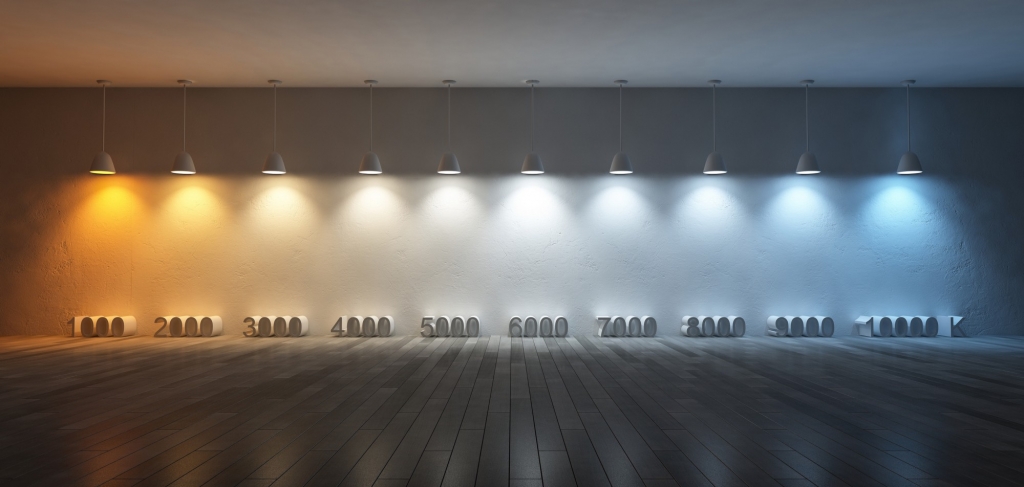
Ordered parts and am not liking the look so much.Depends who you talk to..no really..
D50 and D65 are daylight standards.. i.e 5000K and 6500K
Picture is best..

check new combo. What do you think
Attachments
- Joined
- Sep 18, 2017
- Messages
- 5,589
- Reaction score
- 3,439
Fine tuning is in the eye of the beholder
Besides if in channels and controlled, easily adjusted .
Remember spectrum chart changes as you dim " colors".
Only " rule" I really ever found is broad blue band and lots of photons.
Red not more than 30% of par.
Rest is err cosmetic.
You can argue uv, ir , and coral color shifts (which blue, which violet, which uv ect)
But my philosophy is its for enjoyment so stay in standard guidelines and its all good.
Just an opinion.
Besides if in channels and controlled, easily adjusted .
Remember spectrum chart changes as you dim " colors".
Only " rule" I really ever found is broad blue band and lots of photons.
Red not more than 30% of par.
Rest is err cosmetic.
You can argue uv, ir , and coral color shifts (which blue, which violet, which uv ect)
But my philosophy is its for enjoyment so stay in standard guidelines and its all good.
Just an opinion.
Similar threads
- Replies
- 1
- Views
- 55







